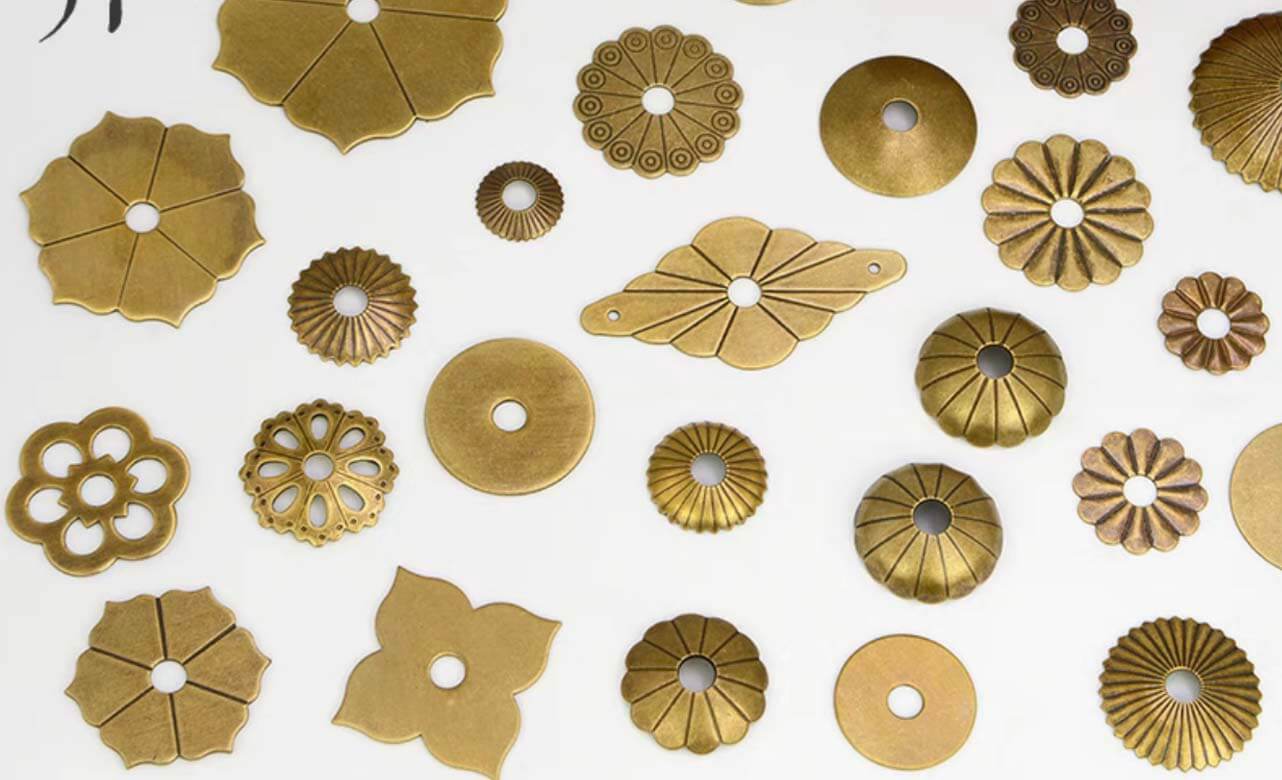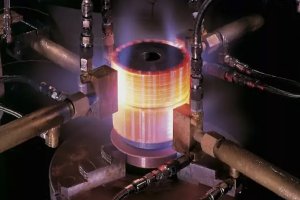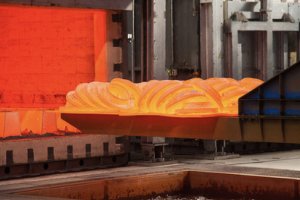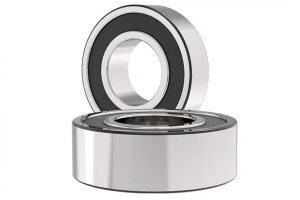Introduction to Antique Brass and Its Applications
Antique brass is a sought-after material in fields that value both aesthetic charm and functionality, such as interior design, architecture, and decorative hardware manufacturing. Known for its warm, golden hue and vintage patina, antique brass adds a timeless look to fixtures, hardware, and custom furniture. With the advent of CNC machining, antique brass customization has become more precise, enabling the creation of intricate patterns, detailed engravings, and even fully custom shapes that hold up well in high-visibility applications.
In my work with antique brass, I’ve learned that it’s more than just a visually appealing choice; it also requires careful handling to preserve its unique patina and finish. This guide will delve into essential considerations for CNC machining antique brass, from selecting the right tools to maintaining the material’s characteristic aged appearance.
Characteristics and Challenges of Machining Antique Brass
Antique brass brings several specific material characteristics to the table, each impacting its performance in CNC applications. Knowing how to work with these characteristics is crucial to achieving high-quality results.
| Characteristic | Antique Brass Properties | Machining Implications |
|---|---|---|
| Hardness | Moderate | Moderate tool wear; suitable for detailed machining |
| Corrosion Resistance | High | Requires minimal additional treatment |
| Aesthetic Appeal | Golden with natural patina | Care needed to preserve appearance |
| Conductivity | High thermal and electrical | Allows for specialized finishing techniques |
| Density | High | Needs adequate support during machining |
| Ideal Applications | Decorative, architectural, furniture | Precision machining for visible components |
Antique brass is moderately hard, which provides a balance between machinability and durability, making it well-suited for intricate custom work on CNC machines. However, one of the primary challenges is preserving the patina that gives antique brass its distinctive, aged look. If improperly handled, CNC machining can lead to surface marks or discoloration that can detract from the material’s appeal. A common solution is to use protective coatings or treatments post-machining to maintain the desired finish.
Best Practices for CNC Machining Antique Brass
Achieving optimal results with antique brass requires careful setup and planning. Here are key best practices for CNC machining antique brass that help retain the material’s natural charm and functional appeal.
- Tool Selection and Machining Setup:
The type of tools used in CNC machining plays a significant role in the final product. Carbide or diamond-tipped tools are recommended for antique brass, as they offer longer wear and maintain sharpness through extended runs. Brass is soft compared to harder metals, but choosing high-quality tools reduces the likelihood of tool marks or scratches. - Cutting Speeds and Feeds:
Maintaining moderate speeds is essential to reduce friction and minimize wear on the brass surface. Lower cutting speeds and moderate feed rates allow the material to be machined smoothly while avoiding overheating, which can lead to color changes on the brass. - Coolant and Lubrication:
Using coolant is critical when machining antique brass, as it helps manage heat buildup and reduces surface oxidation. In my experience, a light, non-reactive lubricant works best, as it doesn’t interfere with the natural patina of the brass. - Protecting Surface Finish:
To prevent scratching or dulling the antique brass surface, use low-pressure air to remove chips during machining instead of brush-cleaning, which could cause unwanted marks. An additional way to protect the finish is by applying a thin, temporary coating before machining, which can be easily removed post-process. - Avoiding Overheating:
Heat can alter the color of antique brass, leading to tarnish or unwanted patina changes. To mitigate this, employ short, controlled passes and monitor the cutting temperature. - Post-Machining Cleanup:
After machining, clean the antique brass component with mild cleaners to remove any residue without affecting the patina. Avoid harsh chemicals that could strip or alter the surface finish.
Surface Finishing Techniques for Antique Brass
Maintaining or enhancing the antique look of brass after machining requires specific surface finishing techniques. Here are some effective approaches:
| Finishing Technique | Purpose | Result on Antique Brass |
|---|---|---|
| Patina Retention | Protects existing aged appearance | Maintains vintage look |
| Polishing | Removes minor surface imperfections | Adds a smooth finish while retaining patina |
| Protective Coating | Prevents tarnish and environmental wear | Prolongs lifespan of the antique finish |
| Light Patination | Adds patina or darkens specific areas | Enhances vintage aesthetics |
| Brushing or Buffing | Texturizes surface for aesthetic variety | Adds a matte or brushed look |
| Clear Waxing | Protects and adds a mild shine | Retains a natural, soft finish |
- Patina Retention: To keep the original patina intact, avoid aggressive polishing or buffing. Light cleaning with a soft cloth can help maintain the aged look, or, if required, a custom patina solution can be applied to touch up areas.
- Polishing and Cleaning: Polishing with a soft buffer and low-abrasion compounds will remove minor imperfections without stripping the patina. I find that a gentle polish works best, preserving the natural charm of antique brass.
- Protective Coating: Clear coatings or wax applications are ideal for preventing tarnish and wear. This step is especially useful for antique brass items that will be used in high-contact environments, such as furniture or hardware.
- Brushing and Buffing: For a distinct look, brushing or buffing antique brass creates a soft, matte effect that complements its vintage character. This finish is popular for hardware pieces that need a subtle, rustic touch.
- Applying a Clear Wax Layer: A thin layer of clear wax can add a mild shine while preserving the natural look of antique brass. This method is especially effective in preventing fingerprints or other minor blemishes.
Real-World Applications of CNC-Machined Antique Brass
Antique brass is used across various industries for its aesthetic qualities, durability, and versatility. Below are specific examples of how antique brass is applied in real-world CNC machining projects, showcasing its value in fields like architecture, interior design, and decorative hardware.
In Architecture and Interior Design
- Applications: Antique brass is frequently seen in architectural details and interior decor elements like door handles, light fixtures, stair railings, and custom hardware.
- CNC Customization Benefits: CNC machining enables precise detailing, making it possible to produce intricate patterns and decorative designs that fit seamlessly into architectural projects. For example, a customized antique brass door handle or railing finial can be machined to match specific design motifs, providing a high level of detail.
- Aesthetic Impact: The vintage look of antique brass adds warmth and sophistication to interiors, especially in traditional or vintage-inspired settings. CNC machining offers a level of precision that enhances these design elements without sacrificing the unique, aged look.
In Decorative Hardware and Furniture
- Applications: Antique brass is commonly used in decorative hardware, such as cabinet handles, drawer pulls, and furniture accents. It’s also a popular choice for custom furniture makers who want to incorporate a vintage flair into their designs.
- CNC Customization Benefits: CNC machining provides consistency and precision, which are especially valuable for hardware manufacturers who need multiple identical pieces. With CNC, manufacturers can achieve uniformity in size, shape, and intricate patterns, which is essential for hardware sets.
- Aesthetic Impact: Antique brass complements wood, leather, and other warm materials, enhancing the overall aesthetic of high-end furniture pieces. Its natural patina adds an element of character, making each piece unique yet consistent with the overall design.
In Art and Jewelry
- Applications: Antique brass is a popular choice among jewelers and artists creating custom, vintage-style jewelry and decorative art pieces. Items such as necklaces, bracelets, and small sculptures are commonly crafted from antique brass.
- CNC Customization Benefits: CNC machining enables high precision for intricate designs that would be challenging to achieve by hand. Small engravings, relief work, and detailed filigree are possible with CNC, allowing artists to bring complex designs to life.
- Aesthetic Impact: The distinct patina of antique brass lends an authentic, historical feel to jewelry and art pieces, making them appealing to clients who favor a vintage or artisanal look.
Cost and Feasibility of CNC Machining Antique Brass
When considering antique brass for CNC machining projects, it’s essential to weigh the costs, potential challenges, and long-term feasibility. Below is an analysis of the main cost factors, feasibility considerations, and the benefits of using antique brass in CNC applications.
| Cost Factor | Impact on Project | Considerations |
|---|---|---|
| Material Cost | Moderate to High | Depends on market price of brass alloys |
| Tooling and Wear | Moderate due to brass softness | Reduced tool wear compared to harder metals |
| Machining Time | Moderate | Efficient machining, but slower speeds may be needed |
| Post-Machining Finishing | Adds to overall cost | Necessary to retain or enhance patina |
| Volume and Consistency | Cost-effective for larger production | CNC ensures uniformity across multiple parts |
| Custom Design Complexity | Higher costs for intricate designs | CNC allows for detailed, precise customization |
Material Cost: Antique brass generally has a moderate to high material cost depending on the specific brass alloy used. The cost can vary with market demand and the quality of the brass selected, but overall, it remains affordable compared to precious metals.
Tooling and Wear: Brass is softer than other metals like steel, which leads to less wear on CNC tooling. This reduced tool wear translates into lower overall tool replacement costs, making it more economical for extended projects involving multiple components.
Machining Time: Antique brass is machinable at moderate speeds, though slower cutting speeds may be required to preserve the surface finish. As a result, machining time can vary based on the design’s complexity and the precision required. Simple designs are more cost-effective, while intricate or large projects may require additional time and increased costs.
Post-Machining Finishing: Maintaining the antique look of brass often necessitates post-machining finishing, which can add to the overall cost. Whether applying a protective coating, a patina enhancer, or wax, these steps help maintain the aged appearance while enhancing durability, making the finishing process a worthwhile investment.
Volume and Consistency: CNC machining is ideal for projects requiring multiple identical parts, such as hardware sets or decor pieces. CNC ensures consistency across large volumes, making it a cost-effective choice for batch production, especially for clients who want the same design replicated across multiple products.
Custom Design Complexity: Complex designs may incur additional costs due to longer machining times, increased tool wear, and more detailed finishing requirements. However, the precision achievable with CNC adds value to antique brass components, particularly in high-end or custom design markets.
Conclusion: Maximizing the Aesthetic and Functional Potential of Antique Brass with CNC
In summary, antique brass offers a blend of beauty, durability, and versatility that makes it an ideal choice for custom CNC machining. For those looking to add intricate details or produce high-quality decorative components, antique brass provides a distinct, vintage appeal that stands out in fields like architecture, interior design, and decorative hardware. With CNC machining, users can achieve high levels of detail and consistency, making antique brass a reliable option for both aesthetic and functional applications.
Throughout my experience with antique brass projects, I’ve found that combining the right machining practices with thoughtful finishing techniques can make a significant difference in the final product. For anyone considering CNC machining with antique brass, this guide provides insights and recommendations that will help preserve the material’s character while achieving precise, visually appealing results.
FAQ
- Can antique brass be CNC machined without damaging the patina?
Yes, by using protective measures and proper tool selection, CNC machining can achieve precision without damaging the natural patina. - What finishing methods work best to preserve antique brass’s aged look?
Light polishing, waxing, and clear coatings are recommended to retain or enhance the antique brass finish. - Is antique brass suitable for high-contact items like door handles?
Yes, with a protective coating, antique brass can withstand frequent handling while maintaining its appearance. - How does the cost of antique brass compare to other metals for CNC machining?
Antique brass has a moderate to high cost but is generally more affordable than precious metals, with moderate tool wear and finishing needs. - What types of tools are recommended for CNC machining antique brass?
Carbide or diamond-tipped tools are ideal for maintaining sharpness and reducing tool wear. - Does machining speed affect the antique brass patina?
Yes, slower speeds are preferable to avoid heat buildup, which can alter the brass’s color and finish. - Can antique brass be customized for jewelry?
Absolutely. CNC machining allows for fine details and intricate designs, making antique brass a popular choice in jewelry and art pieces.
Other Articles You Might Enjoy
- Comprehensive Guide to CNC Machining Brass Screws
Brass screws are widely used in various industrial and commercial applications due to their superior mechanical properties and attractive appearance. This article will delve into the characteristics of brass, the…
- The Future of CNC Machining Parts with Environmentally Friendly Brass Alloys
As industries strive to become more environmentally conscious, the materials used in CNC machining are evolving. One of the most significant changes in this domain is the shift from traditional…
- Brass CNC Machining: The Advantages of Using Brass in Custom Metal Fabrication and Prototyping
Introduction to Brass CNC Machining and Its Importance in Custom Metal Fabrication and Prototyping CNC machining, a digitally-powered manufacturing process that deploys pre-programmed computer software to manipulate tools' movement and…
- Why Annealing Brass Matters in CNC Machining
Introduction Annealing brass is a key process in CNC machining, as it enhances machinability and improves the final quality of parts. Brass, an alloy primarily of copper and zinc, is…
- Choosing Between Bronze vs Brass for CNC Applications
Introduction to Bronze vs Brass in CNC Machining When selecting materials for CNC machining, bronze vs brass is a common comparison for machinists and designers alike. Both materials, bronze and…
- Why is Brass Preferred for Precision CNC Machining in Food Automation Equipment?
Why Choose Brass for CNC Machining in Food Automation? Brass, with its remarkable machinability and corrosion resistance, stands out as an ideal material for food automation equipment. Used widely in…









